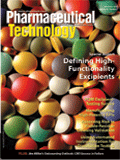Uncertain Terms
I recently embarked on a quest: to investigate industry's use of the words, "generic" and "biosimilar" when describing a biologic molecule. An English major at heart, I was wrapped up in a news story that was partly about science, partly about words.
I recently embarked on a quest: to investigate industry's use of the words, "generic" and "biosimilar" when describing a biologic molecule. An English major at heart, I was wrapped up in a news story that was partly about science, partly about words.
FDA declined Nastech's ANDA for a generic version of the "Miacalcin" (Sandoz, Novartis) osteoporosis treatment and asked the company to provide antigenicity data on possible interactions between two ingredients: a calcitonin peptide and the preservative, chlorobutanol.

Kaylynn Chiarello-Ebner
The need for this data was surprising. It's not usually used in a generic application, which doesn't require additional clinical data.
The request again raised questions about whether biologic molecules should be treated as a generic or a biosimilar product. Does a protein's molecular weight affect the product classification as a generic or a biosimilar? Does a generic version of a biologic molecule mean it's a biosimilar drug? And, just what are defining lines between these terms?
Looking for answers
When FDA grudgingly approved Sandoz's "Omnitrope" human growth hormone last May, the agency performed impressive logical gymnastics in labeling the product as a "follow-on protein," and not as a "generic biologic." FDA maintains that such a creature is unattainable under current law. Yet, we continue to use terms without recognized definitions: follow-on proteins, follow-on biologics, biogenerics, biocomparables, and the European entry, biosimilars.
On the Web, a site claiming to be the first dedicated to generic biopharmaceuticals opens with an ominous warning: "Caution! Terminology and just about everything associated with 'generic' biopharmaceuticals is ill defined and often controversial."
Well, that certainly summed up everything in a nutshell.
I wanted hard-and-fast definitions clearly used across the industry with specific applications. But, despite FDA guidelines, I found a gray area where context rules instead of black-and-white certainty.
Until there's more regulatory movement on the generic biologics front, I guess I'll have to settle for case-by-case flexibility. But, I'd prefer a little bit of precision.
Kaylynn Chiarello-Ebner is the managing editor of Pharmaceutical Technology kchiarello@advanstar.com

PacBio Chosen as Tech Partner for Global Alzheimer’s Disease Research Project
April 23rd 2025The project, the North African Dementia Registry, will unite multiple entities for the purpose of developing a comprehensive dataset to advance the research community’s understanding of Alzheimer’s disease and other dementias in diverse populations.